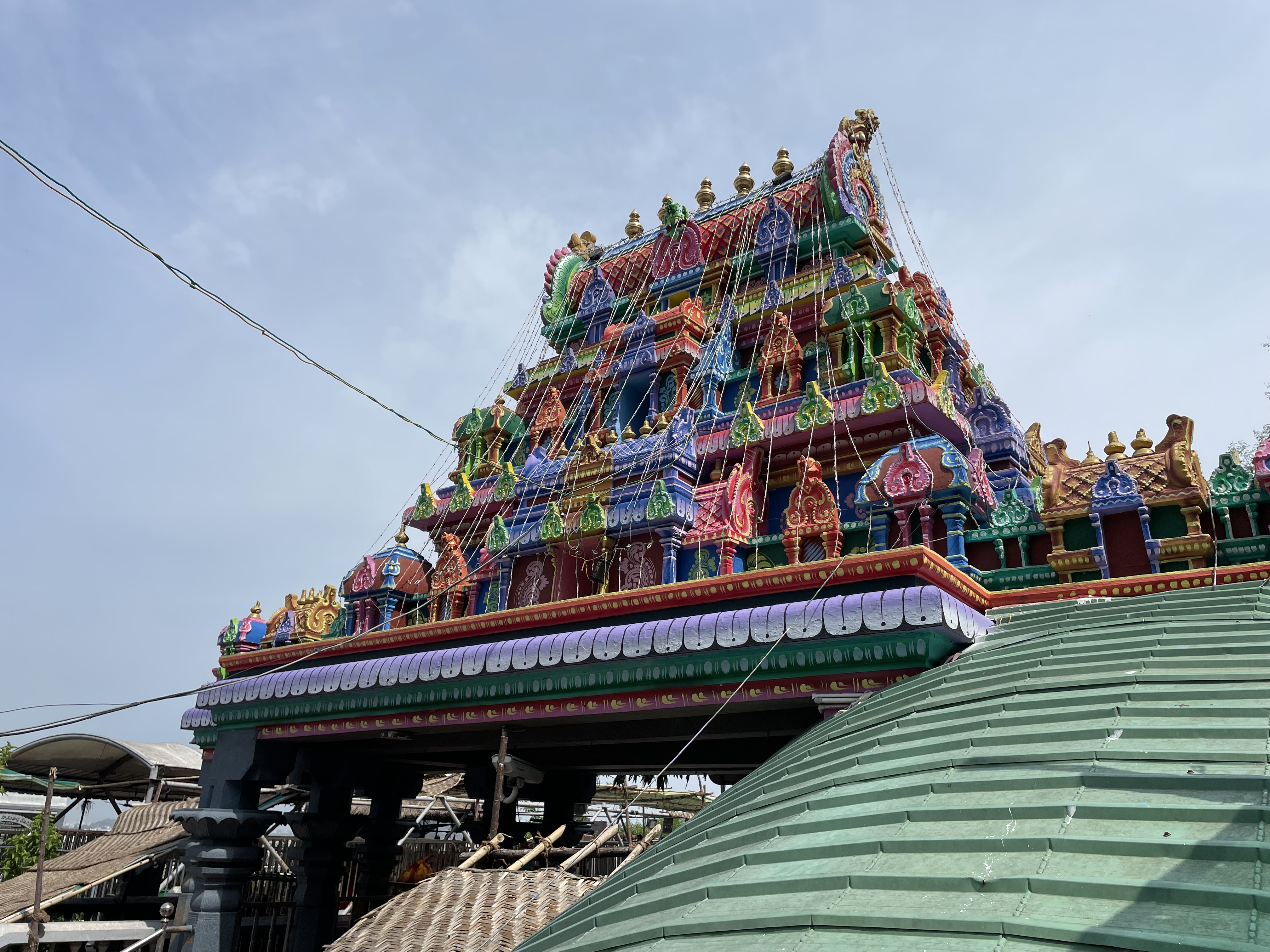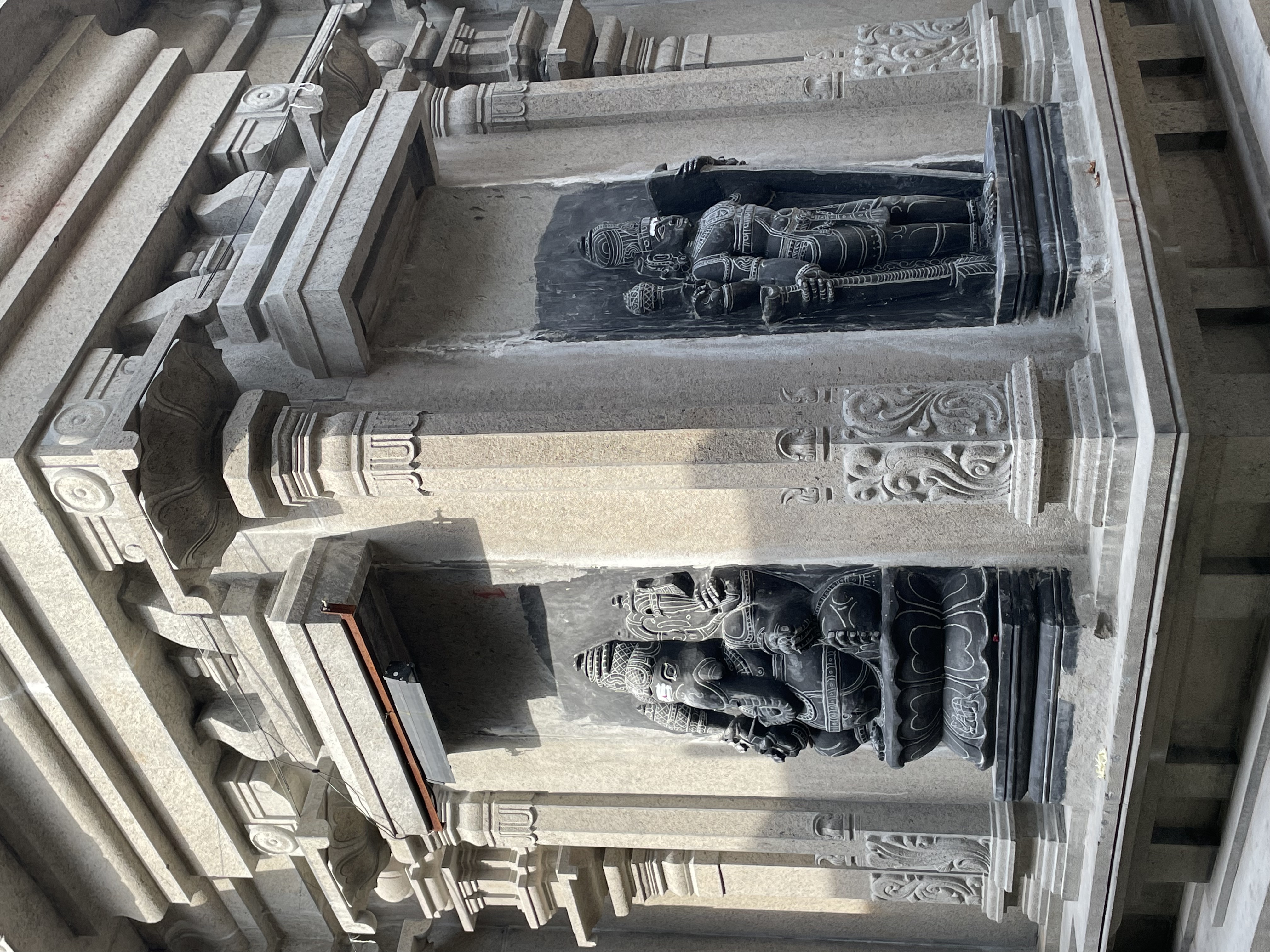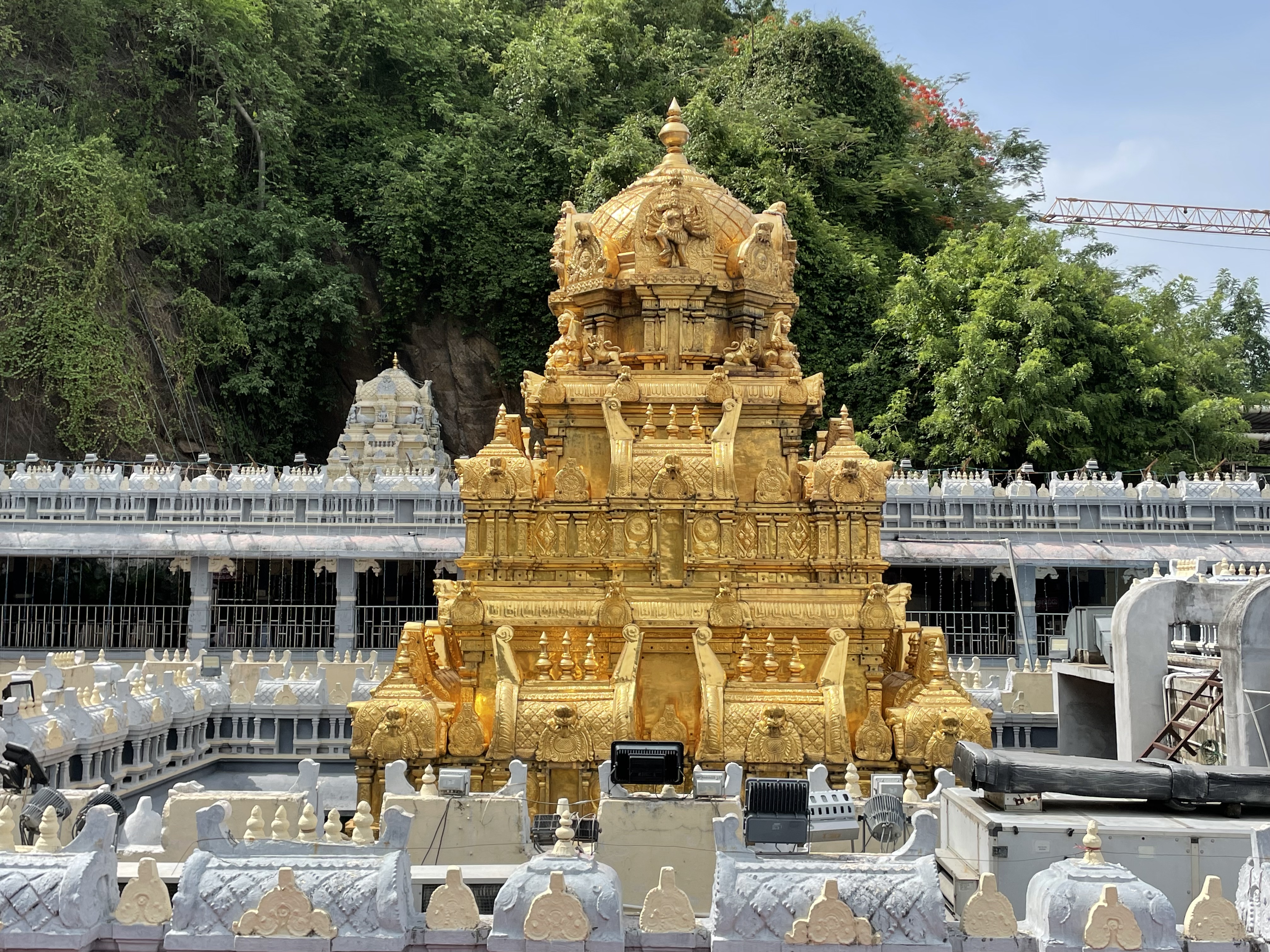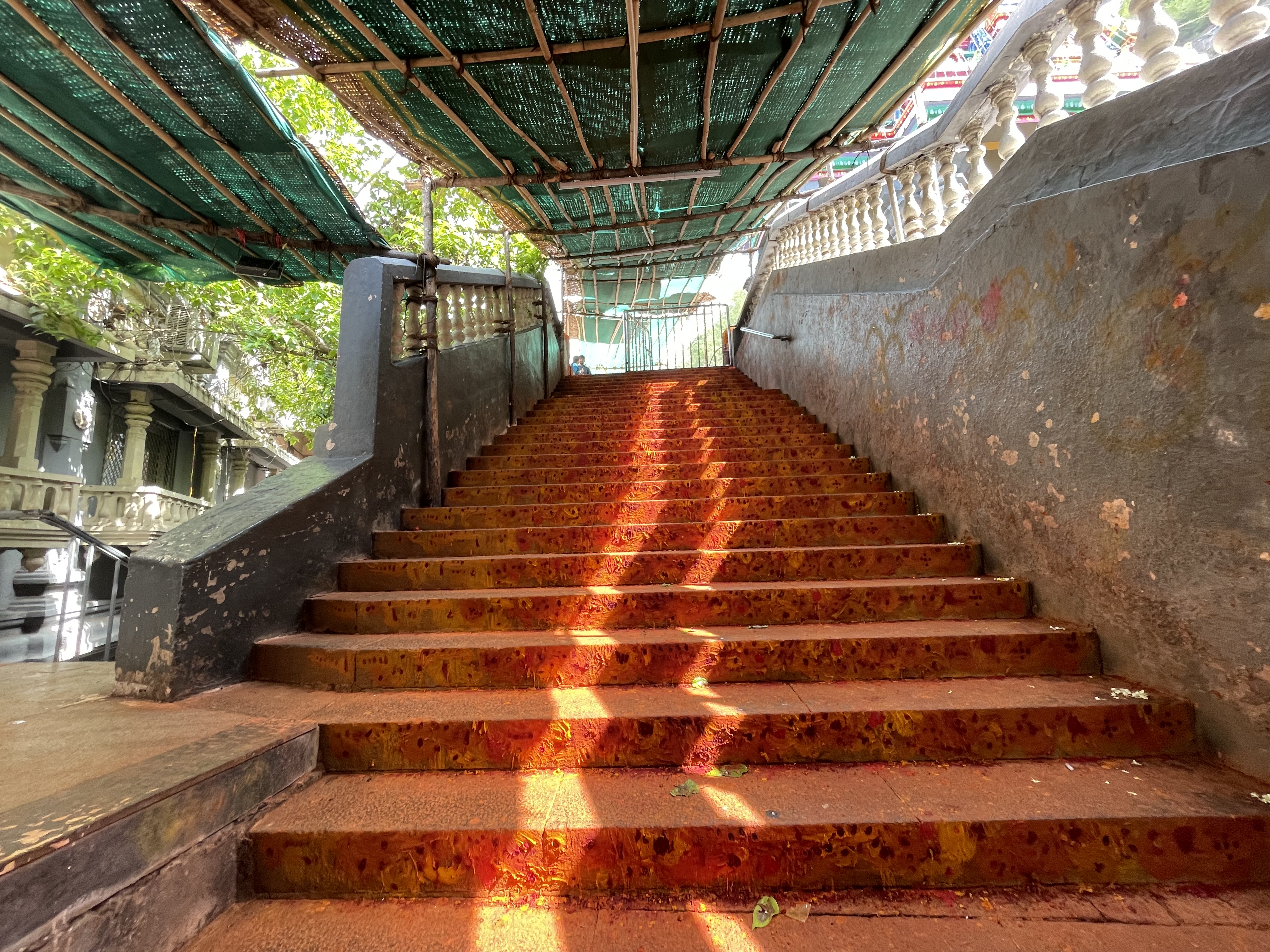Kanaka Durga Temple on Indrakeeladri Hill's history begins with the story of a Yaksha named Keela, who performed severe penance to please Goddess Durga. Satisfied with his devotion, the goddess granted his wish to reside in his heart and instructed him to take the form of a mountain on the banks of the Krishna River. After vanquishing demons in Krithayuga, she promised to reside in his heart. As foretold, Goddess Durga appeared on the Keela mountain in her eight-armed form as Mahishasura Mardini after slaying the demon Mahishasura. Her golden radiance earned the mountain the name "Kanakachala," while Indra and other deities visited and worshipped the mountain, earning it the name "Indrakeeladri." Recognizing the spiritual significance of the site, Lord Brahma performed the Sata Aswamedha Yaga to invoke Lord Shiva's presence. Shiva manifested as a Jyotirlinga, worshipped initially by Brahma with jasmine (Mallika) flowers, earning the deity the name "Mallikesa." In Dwaparayuga, Arjuna performed penance on Indrakeeladri to obtain the Pasupatastra from Lord Shiva. Disguised as a hunter, Shiva tested Arjuna's devotion and eventually granted him the powerful weapon, further cementing the deity's name as "Mallikeswara." In Kaliyuga, Adi Sankaracharya reinstalled the Malleswara Swamy Jyotirlinga and introduced Vedic worship practices, including the installation of the Srichakra and the cessation of animal sacrifices. The temple of Kanaka Durga revered as "Swayambu," became a significant pilgrimage site. Indrakila is home to several ancient rock-cut temples. Over time, debris buried these temples, leaving them forgotten. However, quarrying activities for stone and road construction uncovered the temples, leading to their preservation as protected monuments. An executive officer manages the temple, which is under the administrative control of the Government of Andhra Pradesh. The increasing number of pilgrims has significantly boosted the temple's annual income, enabling the construction of additional structures and beautification projects. In 1987–88, the temple conducted the "Sathachandiyagam" for the first time, aimed at benefiting humanity and protecting against evil. Vijayawada remains a central and significant town in Andhra Pradesh, well-connected and home to these ancient and revered temples, attracting devotees from all over.
|
To be Updated..



